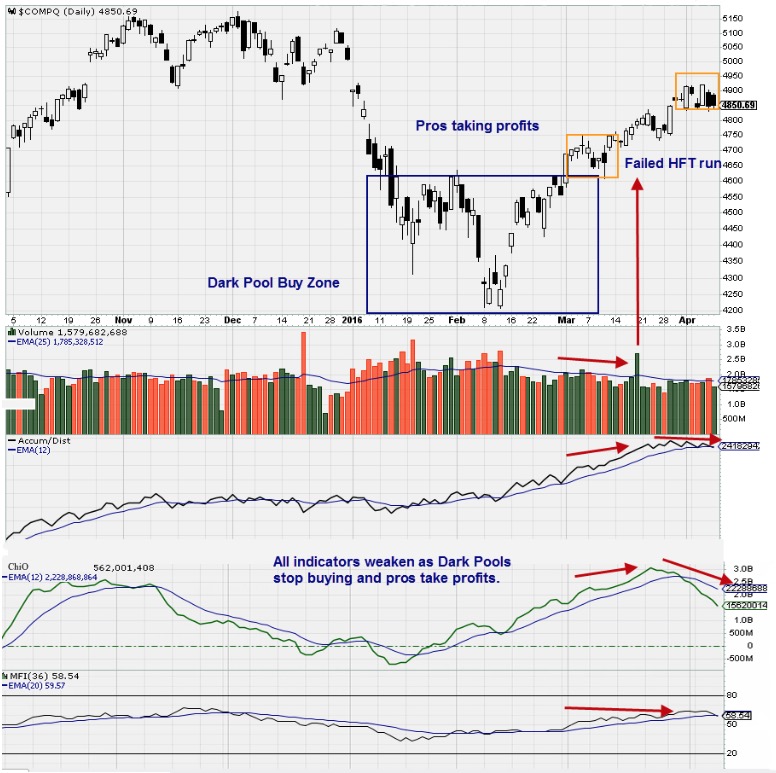Why the Market Moves Sideways
Trading so-called “Volatile Markets” can seem like a daunting task. Many Retail Traders struggle during these phases of trading action, and do not recognize how to cope with “Volatile” Trading Conditions. The problem is not that stock price action is “Volatile” but that few traders know why this happens, how to trade this type of price pattern, and when to expect the volatility to convert to sudden momentum action.
Volatility is a loosely used term for a broad variety of sideways action. It is rarely defined adequately so that traders can determine how, when, where, and what to trade. That leaves many traders frequently frustrated because the modern automated market moves sideways often.
Volatility is nothing more than up and down price action, that if not fully understood can and does cause the common “whipsaw” trade that causes traders to take losses only to watch the stock move afterward.
Although there are many “blame games” that Retail Traders are taught. “Market Makers” is the most common blame game, which is really a myth because over 95% of all retail trade orders never make it to the exchanges nowadays but are filled by your broker from their inventory.
The point is that blaming anyone or anything is simply a waste of time. Instead the focus on How to cope with “Volatile” Trading Conditions should be the following:
1. Identifying early that a sideways aka Volatile Trading Condition is about to occur.
2. Determine why this Trading Condition has occurred, or is about to occur.
3. Analyze the Price action, to correctly choose the breakout direction.
4. Finds stocks to trade that have compressing sideways patterns, that will end with a breakout to the Upside or Downside.
5. Plan your Entries.
Why does the market move sideways or become volatile?
All sideways action whether it is a Consolidation or a Trading Range, occurs because of a Shift of Sentiment™ which alters the balance of power within the trending stock or market.
See the chart below for the NASDAQ Composite Index ($COMPQ: Index) as an excellent example of volatile Index action, as a Shift of Sentiment is unfolding.

The critical analysis is to determine where the dominant Market Participant Groups are trading, either up or down. Are these dominate groups buying or are they selling? When there is a Shift of Sentiment within the Trend, volatility erupts suddenly. This is because instead of most Market Participant Groups all on the same side of the trade driving price upward for instance, suddenly and often without warning an important Market Participant Group is selling.
This is exactly why the $COMPQ has a volatile sideways pattern over the past week. The index rammed into resistance, and without most Retail Traders realizing it a Shift of Sentiment triggered profit taking. The actual Shift of Sentiment began earlier in the run up, as the Index value rose above the Dark Pool Buy Zones™ of the component stocks of the $COMPQ.
Giant Institutions use Dark Pools and Time Weighted Average Volume TWAP orders. These automated orders, stop triggering once price moves beyond a specific price. Since Giant Institutions are liquidity takers, this can quickly result in Professional Traders taking profits early, ahead of a technical resistance level. It can also confuse the High Frequency Trading HFT automated trigger order, which can then create a huge Volume surge for one day but without price moving much.
Summary
The result of Professional Traders profit taking and HFTs on the opposing side of the Dark Pools, stalls price shifting it sideways. Meanwhile the less informed Retail Trader does not see the sideways action; nor do they know to LOOK for a Shift of Sentiment so they are buying as larger lots are selling, and this is what creates “Volatility.”
When you learn to read stock charts properly, a whole world of information suddenly appears before your eyes. Who controls price, who is buying, and who is selling is all critical information in learning how to cope with “Volatile” Trading Conditions. When you recognize this information you can determine the direction of the breakout, and whether this is a minor retracement or a reversal pattern.
Trade Wisely,
Martha Stokes CMT
www.TechniTrader.com
info@technitrader.com
